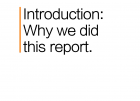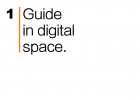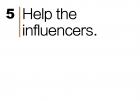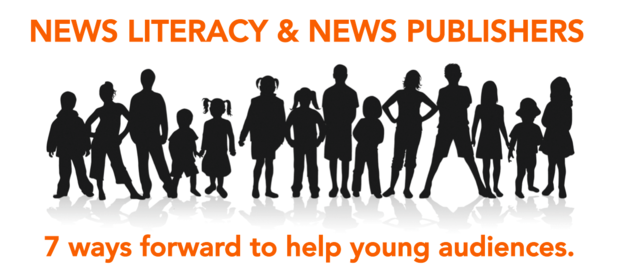This is the seventh installment of a WAN-IFRA series about news literacy initiatives around the world (outside the United States) that have been created by or could involve news publishers. It was commissi![]() oned by the American Press Institute. The author is Aralynn McMane.
oned by the American Press Institute. The author is Aralynn McMane.
INSTALLMENTS OF THE REPORT
 |
 |
 |
 |
 |
 |
 |
 |
#7 WHAT NEXT? Consider this example to create the future
The R.AGE youth initiative team at The Star in Malaysia won WAN-IFRA's top World Young Reader Prize in 2016, becoming the World Young Reader News Publisher of the Year. Here's why publishers everywhere should pay attention to their approach.
Malaysia is not an easy country in which to do journalism, so one might be surprised that a model for how to take the next steps in news publishing would emerge there, both for young people and everyone else.
In 2016, Malaysia went up one notch in the World Press Freedom global rankings based on freedom of expression and of news media, but only to number 146 out 180 countries. Historically, Malaysian digital news sites have had more maneuvering room than print and broadcast operations, but that is changing. In March of the same year, the respected online news portal, The Malaysian Insider, closed its editorial operations after the state media regulator blocked local access to its site in reaction to its coverage of a major financial scandal.
However, there is much to learn about how to approach the future from the team at R.AGE, an initiative of The Star Media Group, which publishes the country’s second largest daily (the largest English language daily). In short the R.AGE team gets it right when it comes to change that keeps journalism, compelling storytelling, smart management and audience involvement at the heart of the work.
 Led by Ian Yee, this team was named the 2016 World Young Reader News Publisher of the Year for an inspirational set of innovative actions based on a commitment to journalism. [Video 00:02:09]
Led by Ian Yee, this team was named the 2016 World Young Reader News Publisher of the Year for an inspirational set of innovative actions based on a commitment to journalism. [Video 00:02:09]
“I believe many youth teams in newspapers struggle to get any kind of real recognition,” Yee said upon winning the WAN-IFRA award. “We're often seen as just a bunch of plucky kids in some corner of the newsroom who aren't quite real journalists, but this award helps us break that stereotype. [This recognition] reminds everyone that young journalists, armed with technology and the freedom to innovate, can be forces to be reckoned with. We can be disruptive to the newsroom, but in the best possible way.”
When they began at R.AGE, team members, mostly in their early and mid-20s, first learned to embrace the basics of serious, professional reporting, taught by veteran editors. Since then, the team has led the way for The Star to explore new digital frontiers. Part of that achievement can be attributed to exceptional success in workplace relations around gender.
The R.AGE team is mostly female, its core values forged by the previous R.AGE editors, Ivy Soon and Tan Ju Eng. In terms of senior management, the R.AGE team now receives its direction from June H.L. Wong, The Star's COO of content development; while group chief editor Leanne Goh has also long advocated taking young people seriously.
“I’m probably biased because I work here, but I’m really proud that the company has done so well in allowing gender equality to thrive,” Yee says. The company didn’t do them any favors or promote them through tokenism. It simply created a fair environment for all genders, but the women themselves worked hard to earn their own success.”
The R.AGE team also has also worked hard for its success.
In a blog about the 10th anniversary of R.AGE, Yee explained how his older editors insisted he do serious journalism, despite his own skepticism that anyone would care.
“They kept us churning out heavy feature stories on politics, social issues, student rights, and so on – even when the reporters didn’t always enjoy it,” he recalls. “In hindsight, our editors were right all along. Young Malaysians have always cared about social issues, they just never had a platform they were comfortable with to learn about and discuss them. They weren’t being empowered to make a difference. I was getting emails from people telling me how our stories were making a difference, especially with marginalized communities like young people living in urban poverty, or people living with HIV.”
When it came time to embrace social media, the skepticism was from other older staff:
“The common joke back then was that young people only used social media to tell everyone what they had for lunch,” he wrote. “We weren’t buying it.”
The R.AGE staff was early in taking the brand of serious youth journalism (and some fun) to Twitter, Facebook, Instagram “and pretty much every new platform that came up.”
“It allowed our journalists to send out news to our followers faster than any of our competitors at the time,” Yee wrote. ‘I remember live tweeting from the slums of India (using a SMS Twitter gateway – anyone remember those?) while other journalists were waiting to get back to the hotel to file their stories. Everyone does it now, but back then, we were streets ahead.”
He explained that social media also allowed readers to engage his team directly, adding perspectives to stories: “Our #RAGEchat Twitter Q&A series was almost like a full feature story being written live on our timeline, with young people sharing their stories and expert guests chiming in.”
By 2013, his wisdom about comment moderation was a key element in an international WAN-IFRA publishers conference for the Middle East and another conference on digital reporting in Poland.
Now the innovation is in video. R.AGE began by launching a video campaign to help stagnant participation in an annual Cheerleading competition it sponsored by showcasing the raw athleticism, grit, determination and art involved.
 The strategy was two-sided. Yee explained in his World Young Reader Prize entry that the campaign also featured celebrity supporters and live broadcasts of competition finals on social media. “Not only would this revitalize the CHEER [competition] brand but it would be a great way for R.AGE brand to show its support for healthy, positive and empowering activities for Malaysian youth,” he explained. [Video 00:01:00]
The strategy was two-sided. Yee explained in his World Young Reader Prize entry that the campaign also featured celebrity supporters and live broadcasts of competition finals on social media. “Not only would this revitalize the CHEER [competition] brand but it would be a great way for R.AGE brand to show its support for healthy, positive and empowering activities for Malaysian youth,” he explained. [Video 00:01:00]
Sponsorship money poured in, but the team stuck to its initial budget of $12,500. Then management allowed the team to reinvent R.AGE as a video-first platform.
R.AGE TV began with five print journalists and some video cameras obtained in exchange for some native advertising. “The R.AGE team is now almost completely self-sustaining,” Yee said. The team of 12 “thoroughly committed multimedia journalists” does it all: shoots, edits, writes, takes photos, does web design, basic programming and graphic design, and organizes events.
They specialize in documentaries, accompanied by an in-depth feature package on a website with interactive and social functions for audience engagement and sharing.
And the stories revert back to team’s journalistic origins:
• An account from a week living with an indigenous tribe deep in the Malaysian jungle to investigate claims of child deaths from a mysterious illness. The print edition made it the main front page feature, and the Malaysian government reacted by sending aid to the tribe.
• An undercover documentary project investigating child sex predators on mobile chat apps. The first episode alone yielded 550 000 video views. The series resulted in a new law in 2017 supported by both government and the opposition.
• Stories of World War II survivors on the 70th anniversary of the end of the war that sparked interest from old and young.
The work of the R.AGE team fits The Star’s overall strategy, according to chief editor Goh.
“The success of this campaign and R.AGE's overall content strategy affirms The Star's long-standing commitment to empowering young people through journalism and embracing digital media innovations as part of our company's DNA,” she said. “We believe R.AGE is already inspiring a new generation of multimedia journalists across the country, which can only stand us in good stead in the years to come.”
While the politics of the country make it unlikely that R.AGE team members will ever be able to cover the misdeeds of those in power in Malaysia, they nonetheless offer an example of how innovation can work for news publishers anywhere: teach talented young staff the core values and practice of getting to the bottom of the story, then give them the room to make innovations that will ultimately serve the whole company.
Finally, R.AGE continues to offer inspiration when it comes to working relations, especially around gender. In many organizations, male top managers are comfortable with taking full credit for the work of predominately female teams and gathering for themselves any benefits that accrue from that work.
R.AGE is not like that. When it won the top World Young Reader Prize award, the editor got a generous budget to attend the prize ceremony in Washington DC. Instead of taking a first-class trip alone, he managed to bring six members  of his team via super economy tickets and AirBnB lodging in an unchic neighborhood. R.AGE’s editor had all the women (plus one guy) join him onstage when he accepted the award (the other male staffer was filming). He then spent most of his allotted time describing their crucial role in the work for which they were recognized. He didn’t have to share the spotlight. Most winners don’t. Both gestures speak volumes about the powerful nature of a working environment that values all members of a team in building innovation.
of his team via super economy tickets and AirBnB lodging in an unchic neighborhood. R.AGE’s editor had all the women (plus one guy) join him onstage when he accepted the award (the other male staffer was filming). He then spent most of his allotted time describing their crucial role in the work for which they were recognized. He didn’t have to share the spotlight. Most winners don’t. Both gestures speak volumes about the powerful nature of a working environment that values all members of a team in building innovation.
ABOUT THE REPORT
 The lead author of this report is Dr. Aralynn McMane (France), WAN-IFRA executive director for news literacy and youth engagement at the time of the report, assisted by Wendy Tribaldos (Panama) a member of the then WAN-IFRA global committee on youth and news media. Thanks also to Nolwazi Mjwara for her volunteer design and editing assistance.
The lead author of this report is Dr. Aralynn McMane (France), WAN-IFRA executive director for news literacy and youth engagement at the time of the report, assisted by Wendy Tribaldos (Panama) a member of the then WAN-IFRA global committee on youth and news media. Thanks also to Nolwazi Mjwara for her volunteer design and editing assistance.
The American Press Institute (API), based in the United States, conducts research, training, convenes thought leaders and creates tools to help chart a path ahead for journalism in the 21st century. API is an educational non-advocacy nonprofit organization affiliated with the News Media Alliance, formerly the Newspaper Association of America. It aims to help the news media, especially local publishers and newspaper media, advance in the digital age. The organization has long supported the work of News in Education programs and also efforts around news literacy. Some of its research relates directly to those in the youth and media space, e.g. the news behaviors of the latest generation of young adults, Millenials. Other research deals with issues that cut across age groups, e.g. what makes people trust and rely on news.
WAN-IFRA, the World Association of Newspapers and News Publishers represents more than 30,000 online and print news operations, over 3,000 companies and national and regional associations serving news publishers in more than 120 countries. Its core mission remains the same since its founding in 1948 by survivors of the World War II clandestine press of France and the Netherlands: to defend and promote the development and survival of a free press, quality journalism and editorial integrity worldwide. It has global headquarters in Paris, France, and Frankfurt, Germany, and subsidiaries for Africa, Asia, Latin America, Europe and the Middle East



